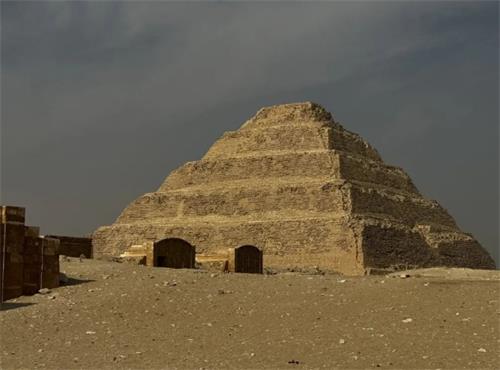
Deep within the western Sahara Desert of Egypt, a long-buried ancient tributary of the Nile may hold the key to solving the mystery of how the Egyptian pyramids were built. For years, scientists have been dedicated to understanding how these colossal structures were erected so far from the Nile River, and more specifically, how the massive stones used in their construction were transported to the building sites.
Eman Ghoneim, a geomorphologist at the University of North Carolina Wilmington, and her team recently discovered a long-lost Nile tributary through satellite imagery analysis and underground sediment sampling. This tributary once flowed near the Giza Pyramids, offering a plausible route for transporting construction materials. Ghoneim named this river Ahramat (meaning "pyramids") and hypothesized that the ancient Egyptians may have utilized this waterway to move the enormous stones needed for pyramid construction. This discovery provides archaeologists with new clues to locate abandoned settlements in Egypt's vast deserts. The findings have been published in the journal Communications Earth & Environment.
For years, scientists have suspected that the Nile once had multiple tributaries. Originating from Lake Victoria, the Nile flows through several countries before emptying into the Mediterranean Sea. Early research indicated that between 10,000 and 6,000 years ago, the Nile’s floodplains were lush wetlands with favorable conditions for life. However, as the climate shifted in the late Holocene period, these wetlands gradually receded, giving way to the desert landscapes we see today.
Ghoneim and her team faced significant challenges in their work. The extreme heat and harsh conditions of the Sahara Desert make field archaeology exceptionally difficult. Before conducting on-site explorations, the researchers first analyzed satellite radar images remotely, identifying subtle patterns in the stratigraphy around the pyramids that hinted at the presence of an ancient river. Ghoneim explained that natural features like elongated depressions or grooves could signify former river channels.
Once these clues were confirmed, Ghoneim led her team to Egypt for field sampling, using large drilling rigs to extract sediment samples from underground. When the drill brought up sand and other coarse-grained sediments, Ghoneim confirmed that the area had once been a riverbed. Although the surface was covered with sand, the underlying coarse sediments indicated that water had once flowed there.
By tracing this vanished river, Ghoneim discovered that the Ahramat tributary stretches approximately 60 kilometers, and it may be even longer. The exact reasons for its disappearance remain unclear, but scientists speculate that geological shifts, wind-blown sand accumulation, and late Holocene droughts likely contributed to the drying up of this waterway.
The research also revealed that this river ran in close proximity to ancient pyramids, spanning a historical period from Egypt's Third Dynasty to the Thirteenth Dynasty (approximately 2650 BCE to 1700 BCE). This discovery not only offers a new perspective on pyramid construction but also provides archaeologists with new leads to uncover ancient settlements buried beneath the desert sands.
Dev Niyogi, a geology professor at the University of Texas at Austin, pointed out that studying how ancient rivers and landscape changes shaped ancient civilizations could offer valuable insights for modern societies dealing with climate change. Additionally, Adam Rabinowitz, an archaeology professor at the same university, emphasized that ancient societies' adaptability and strategies for coping with environmental changes remain highly relevant for contemporary human societies.

Adonis,Venus
Love Ruled by Fate: The Wheel of Destiny of Adonis and Venus
In the vast ocean of art, some paintings transcend time and space, carrying intense emotions and profound stories. Titian's Venus and Adonis is one such masterpiece, depicting a beautiful yet tragic love story.

Sanmao,José
Love in the Desert: The Passion and Pain of Sanmao and José
Love, as time passes, often deepens yet becomes intertwined with regret. Such was the love story of Sanmao and José—a romance spanning four cycles of six years, weaving a legend that transcended both time and space.

Pygmalion,Galatea
From Sculpture to True Love: The Miraculous Romance of Pygmalion and Galatea
In a peaceful town on the island of Cyprus, there lived a sculptor named Pygmalion. Gifted with extraordinary talent, his sculpting skills were admired by many.


